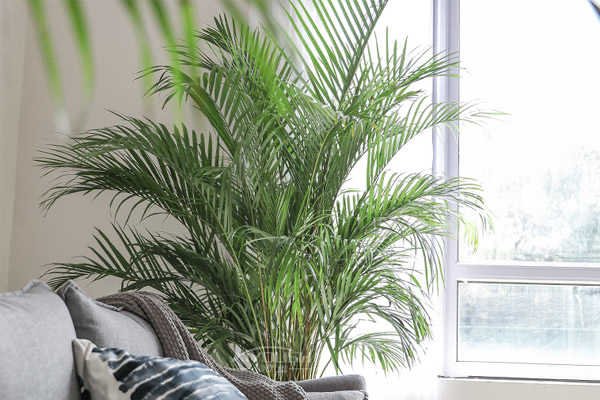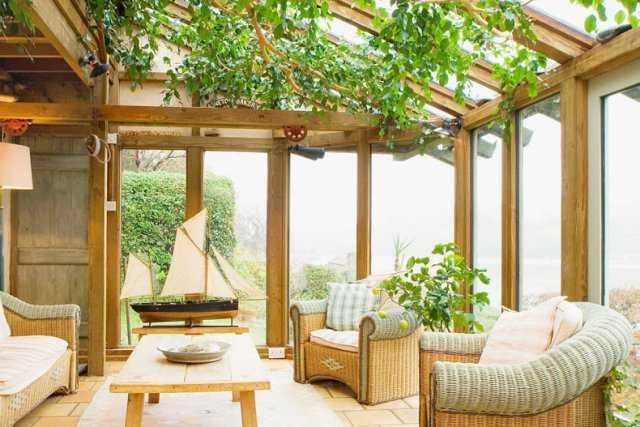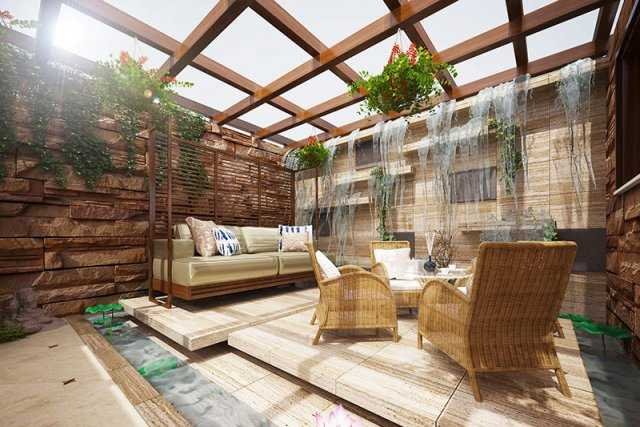Profile
San tail sunflower, also known as yellow coconut, purple sunflower, palm, and loose -tailed sunflower belongs to evergreen shrubs or small trees.The stems are Smooth, yellow -green, no burrs, waxing powder when tender, obvious leaf marks, and pattern.The leaves are Smooth and slender, feather -like compound leaves, full cracks, 40-150 cm long, petiole slightly bent, and soft apex.Sexuality is warm, humid, semi -shade, and good ventilation, afraid of cold, weak cold resistance, young tree pots for interior decoration.

Madagascar, which is native to Africa, now has many cultivation in tropical areas in the world.It is currently cultivated in some garden units in southern my country.In addition, Sanwei Aoi has related treatment effects on vomiting hemoptysis, blood in the stool, and leakage.
Nickname
Yellow coconut, purple sun
Morphology
San tail sunflowers are clustered shrubs, 2-5 meters high, 4-5 cm thick stems, and the base expands slightly.Leaf feather-like cracks, flat exhibitions and slightly bending, about 1.5 meters long, 40-60 pairs of feathers, 2 columns, yellow-green, waxy white powder on the surface, lanceolate, 35-50 cm long, 1.2-2 width, 1.2-2-2For centimeters, the apex is long tail -shaped and has a short -length short 2 cracks.And slightly expanded, usually yellow -green, which was waxed white powder at first, with vertical grooves.
The inflorescence was born under the leaf sheath, with a conical inflorescence, about 0.8 meters long, with 2-3 times, and the branches of the branches are 20-30 cm long.; Small flowers, ovisical, golden yellow, spiral -shaped on the small ear shaft; 3 tablets and petals each, with stripes on it, stamens 6, how much flower medicine;, A room room 1, with short flower pillars and thick stigma.
The fruit is slightly gyro-shaped or ovate, with a length of about 1.5-1.8 cm, 0.8-1 cm in diameter. When it is fresh, it is yellow, purple and black, Smooth outer fruit Skin, and mesh fiber.The seeds are slightly ovate, the embryo is uniform, and there are narrow cavity in the center.Flower period in May, August.
Suitable place
In the courtyard in tropical areas, mostly viewing trees are planted in grass, shade, and houses. The northern region is mainly used for potted plants, which are high -end potted leaves in the living room, restaurant, conference room, family room, study room, bedroom or balcony.plant.You can watch it for a long time in the bright room; you can also watch continuously for 4-6 weeks in a darkest room.
Effectiveness and role
Viewing value
Sanjian-tailed sunflower leaf feather-like lanceolate, soft apex, chic and beautiful posture, sexuality resistance, placed in a bright room for a long time to watch and watch, can be placed continuously in a darker environment for 4-6 weeks, which is deep.The popular high -end ornamental plant has a high value of ornamental.
Remove harmful substances
Sanjieki is a small palm plant that can resist harmful gases such as sulfur dioxide, HF, and mercury vapor, and has strong absorption of chlorine and sulfur.After home decoration, there will be indoor pollution in different degrees of indoor. Several pots of green plants will be placed to absorb these pollutants as nutrients and release fresh oxygen.Placing loose tails in the home can effectively remove volatile harmful substances such as benzene, trichlorohyinne, formaldehyde, etc. in the air.
Family decoration
San Tail Aoi is the best partner of gorgeous style. It has gorgeous and beautiful appearance and excellent connotation of shade resistance.The best partner of the American style and French style home is the lazy atmosphere of San Tail Aoi, which is perfectly matched with the beautiful American and French style decoration.
Of course, Sanwei Aoi, as a plant with strong elegance and anti -staining capabilities, is more appropriate to place the home financial position. Putting on the financial position at home helps to make money.
Sanjiefui has the function of evaporating the water. If you plant a loose tail sunflower in your home, you can keep the indoor humidity at 40%to 60%, especially in winter. When the indoor humidity is low, it can effectively improve the indoor humidity.Natural humidifier in the home.
Medicinal value
Sanwei Aoi can also be used as medicine. It has the effect of convergence and hemostatic, which can treat vomiting hemorrhage, blood, and leakage.
Breeding method
illumination
Sanjieki is warm, and the most suitable growth temperature is 20-35 C.If it exceeds 35 C or lower than 10 C, the cultivation management is slightly improper, and its leaf will become yellow from green.It should be shaded in summer, and it is the most taboo to shoot directly. Even in a short period of time, it will cause the leaves to be brilliant, which is difficult to recover.In winter, it is necessary to do a good job of warming and freezing. Generally, it can be safer to overwinter at about 10 C. If the temperature is too low, the leaves will be yellow, the leaf tip is dry, and the root causes damage and affects the growth of the coming year.It likes semi -yin, and shade should be shaded by 50%in spring, summer, and autumn.The indoor cultivation and ornamental should be placed in a strong scattered light; it can also resist the dark environment, but it must be regularly moved to the better maintenance of Outdoor light to benefit recovery and maintain a high ornamental state.
Humidity/watering
Watering should follow the principles of dry and wetness according to the seasons. The dry and hot season should be properly poured in appropriately, and the water is controlled at low temperature and rain.In the northern region, especially the water contains salt and alkali in the water, it should be paid attention to regulating soil acid with black alum.Usually keep pot soil wet.In the high temperature period of summer and autumn, there must be a high air humidity around the plants, but the pot water is not available, so as not to cause rotten roots.
temperature
Sanjieki is native to tropical regions and likes high temperature environment. It has strict requirements on winter temperature. When it grows slowly when it is lower than 10 C, it starts to enter a semi -dormant or dormant state;In summer, it can be endured when the temperature is as high as 35 C, but growth will be temporarily hindered.The most suitable growth temperature is 18-30 C.
soil
The indoor potted loose tail sunflower should choose a sore soil, and the north should pay attention to the choice of sandy loam soil with high humus content.Rotal leaf soil, peat soil plus 1/3 river sand and some base Fertilizer can be made into cultivation soil.It is relatively deeper than the original planting when it grows on the rhizomes.From May to October, it is a period of vigorous growth and must provide sufficient conditions for water and Fertilizer.
Fertilize
Generally, rotten liquid Fertilizer or Compound fertilizer is applied every 1-2 weeks to promote the vigorous growth of the plants and thick leaves. In the summer, it appropriately applies nitrogen-containing Organic fertilizer. Organic flower Fertilizers such as sesame sauce residue can be applied in winter while maintaining the dry and wetness of the pot soil.
prune
As a looseflower cultivated by cutting leaves, after 2 years of continuous leaf collection, the plants must be comprehensively recovered and necessary for equipment maintenance.It is mainly to maintain the lighting equipment, because as the plant continues to grow, the Shading equipment cannot meet the requirements of the growth of the plant. In the typhoon season, it is easy to break the shade net.The second is the resurgence of the plant.Because of the obvious growth advantage of the trunk, it affects the growth of side buds and causes production to decline. There are also continuous division of plants, which makes the plant type too large, resulting in insufficient growth space, insufficient light, and unable to keep up, which eventually reduces the quality of the leaves.The measures are to comprehensively rehabilitate the plants and deserve the inferiority, mainly to see the excessively high and excessive trunks saw it at 30-40 cm away from the soil, cut some sick and weak branches;The large ones can be implemented, leaving 6-10 strong branches and re-planted, cultivating soil, and pouring roots.
Pelvic
Put the divided plants in the 1500 times liquid of Bacteria for five minutes and take out the cold drying.You can also use Bacteria to clear the roots immediately after the basin.Management after the division: After the part is installed with the root or pour water through the water.3-43-4The steaming of the leaves is not affected. In order to maintain the water balance of the blades, you need to spray the leaf surface for 1-3 times a day and do not fertilize it.After the division, pay attention to the sunlight, it is best to keep it in the shade shed.
Transplant
When the small seedlings are pelpned, first put a 2-3 cm thick thick-grained substrate on the bottom of the pot as a water filter layer. It is sprinkled with a full layer of rotten Organic fertilizer as the base Fertilizer, which is about 1-2 cm.A thin layer of matrix, about 1-2 cm thick, and then put in the plant to separate the Fertilizer from the root system to avoid burning.
The substrate used in the pot can be selected below: vegetable garden soil: slag = 3: 1; or garden soil: medium rough river sand: sawdust (Ru slab) = 4: 1: 2;One in the leaf soil.After the basin is finished, pour the water once and keep it in the shade environment for a week.When the small seedlings are transplanted, first dig the planting acupoint and sprinkle a layer of Organic fertilizer at the bottom of the planting acupoint as the bottom Fertilizer (base Fertilizer), which is about 4-6 cm.The root system is separated to avoid burning.After putting in the seedlings, fill the soil back, cover the root system, and step on the soil with your feet, and pour the water once.
Frequently problem handling
Breeding method
Sanjiefishi can be sowed and split breeding.seeds used for sowing and reproduction are mostly imported from outside China.Generally, potted plants are mostly propagated by sections.
Division
Sub -breeding can be used all year round.Around April, combined with the pots of pots, selected a lot of plants, removed some old pot soil, and divided them into clusters from the base connection into a number of clusters from the base connection.Each clump should not be too small, there are 2-3 plants, and the root system must be kept; the initial planted plants have not yet developed because the root system has not developed, and it should be avoided in strong light.Water in appropriate amount, spray water on the leaves several times a day, keep the leaves moist.Conservation at 20-25 , restore the formation faster.Generally, it can become potted goods for 1-2 years.Otherwise, it will grow slowly after the division and affect the viewing.Planted in a higher humid temperature environment and often spray water to resume growth.
sowing
Those who can get seeds, wash the harvested fruit, soak the seeds in warm water at 35 C for two days and sow.With germination and transplant.Sprinkle water on sunny days.Generally, the growth of young age grows slowly and grows rapidly after the age.
Prevention and treatment of pests and insect pests
Leaf blight
San tail sunflower blight is a common disease caused by fungal infection. It has a great impact on the growth of loose tails. Those who are light will dry the leaves, and the severe cases will cause the entire plant to die.The symptoms, the laws of onset and prevention and treatment methods of the onset, the laws of onset and prevention are now introduced as follows:
1. Symptoms of the disease were first invaded the tip of the leaf and the edge of the leaf. In the early stages of the onset, the infection was brown or strip -shaped plaques. The medium -term spot or plaques gradually expanded and connected to each other. Later, the leaves were gray white and dry.
2. The disease causes pathogenic germs to overwinter on the diseased or soil, and spreads with the wind, rain, and spray watering by conidia, and the germs invade from the plant wound.High temperature, high humidity and dense ventilation environment is susceptible to this disease.
3. To strengthen the disease examination of the prevention and treatment method, do not introduce diseases with diseases; strengthen ventilation, avoid rain and spray during the onset; cut the victims and leaves in time to prevent continued immersion, and the wounds are applied to Dakanin ointment for treatment; if there is a disease, if there is a disease,A 70%methyltotobadin 800 liquid or 75%mobilizer clear 1000 times liquid can occur, sprayed once every 7-10 days, and sprayed 3 to 4 times in a row, which can effectively control the condition.
Sanjieki can evaporate a liter of water every day, which is the best natural "humidifier".In addition, its green palm leaves have a very effective purification effect on dysine and formaldehyde.Frequent water spraying water can not only keep them green green, but also clean the pores of the leaf surface.
Blade dry
The main reasons for the dry coke during the growth period of the leaf leaf and the leaf edge of the loose tail, the main reasons:
The air is too dry.Sanjieki is highly humid in air, and when the air is too dry, it will cause the scorched and coke edges of the blades.Spray water to the leaves and surrounding environments 3-4 times a day to increase the humidity of the air every day and the surrounding environment.But watering should be stopped after dormant.
Excessive sunshine.Sanjieki is like a half-from from May to September. When the sun is directly radiated, the leaves will be yellow, coke, and coke.During this period, it should be placed under the shade or a big tree to avoid direct sunlight.
The pot soil is too dry.During the growth period, Sanwei Kwai needs to provide sufficient water.When the potting soil is dry for a long time, because the plant's growth is not required, the tip of the leaf and the edge of the leaf will be dry.
Pot soil is too wet.It is not as long as there is water in the pot soil, the plant can be absorbed and utilized.When the pot soil is too wet, it affects the breathing effect of the plant root, which affects the absorption of water in the root system, and causes the scorching and coke edge of the leaves in the plant in the plant.
Excessive fertilization.Excessive fertilization will cause the reverse osmosis of plant root cells and cause the plant to lose water. When the degree of lightness is mild, it will lead to the coke and coke edge of the blades. In severe cases, rotten roots will be caused.
Stop growing at 10 C and enter the dormant period.When below 6 C, you need to move into the indoor cold prevention and warmth, and the room temperature must be kept above 8 C.After being moved into the room, you should place it in a lighting place. If the room is equipped with air conditioners such as air conditioners, you should stay away.Otherwise, the leaves and leaves are easily burnt.When the weather turns warmer or it occurs, do not easily move out of the sun or rain, so as not to suffer from "cold" after being cold.When the room temperature appears high temperature above 20-25 C, the doors and windows should be turned on to adjust the temperature and heat and cool down.If the room temperature is too high and sweltering, some leaves will also cause yellowing and falling off.
Citrus and Shield
Features of harm: 1-2 generations occur in 1 year.Adults, nymphs are attached to leaves, petiole sucking juice, affecting plant growth.
Prevention method: When a small amount of insect body is found, it should be scraped in time.When the incidence is large, spray a 50%liquid of 800 times the liquid of gel sulfur.Spray 2-3 times for 2-3 times.
Family care method
1. Soil selection: The sudden drainage must be well drained by the breeding loose tail sunflower. It is best to use soil with more organic matter content.Potted plants can be made with humus or peat soil plus 1/3 of river sand or perlite with a small amount of base Fertilizer.
2,Fertilization management: In order to facilitate the better absorbing Fertilizer of the new buds, try to deepen as much as possible during cultivation.From May to June of each year for the peak growth season, Fertilizer should be applied once every 1 to 2 weeks, and fertilization is stopped after late autumn.Symptoms of loose -tailed sunflower: The color of the leaves fades from uniform thick green to yellow, and the growth rate of the plant slows down; the symptoms of potassium deficiency: The old leaves are dried from green to bronze or orange, and even the leaves are curled, but the petiole remains normal growth, but the petiole still grows normally.With the intensification of potassium deficiency, the entire crown faded, the plant growth was blocked or even died.
3. Water volume control: Watering should grasp the principle of "dryness and wetness", pay attention to timely watering during the growth period, keep the pot soil moist, and water the water twice a day when the summer growth is strong;
4,Air humidity: It is necessary to keep high air humidity around the plant often.In summer, spray water on the leaves and ground to increase the humidity of the air.The leaves should be kept clean in winter, and the leaves can be often sprayed with less water or scrubbing the leaves.
5. Temperature light: The most suitable temperature for Sanwei Aoi is 25 ~ 35 C.The cold resistance is very sensitive to low temperature. The wintering temperature should be above 10 C. If it is lower than 5 C, the plant must be harmed.In the summer, 50%of the sun should be covered, and the most jealous of the sun is mostly directly exposed.It should be placed in a bright place in the room. Too dark is not good for the growth of loose tails. It can be placed in a place with good light in winter.
1. San tail sunflowers are afraid of cold and weak cold resistance. The growing season must keep the pot soil moist and the air humidity around the plant must be maintained.
2. In the winter, you must also pay attention to often scrub the leaf surface or spray the leaf surface with a small amount of water to keep the leaves clean.
3. Generally, scatter -tailed sunflowers need to apply rotten liquid or Compound fertilizer every 1 to 2 weeks to promote the vigorous growth of the plants. The leaf color is thick and green.
4. When breeding of loose tails, there should be sufficient water and Fertilizer conditions.Usually keep the pot soil often wet, and during the high temperature period of summer and autumn, there must be high air humidity around the plants, but the pot water is not available to avoid rotten roots.




